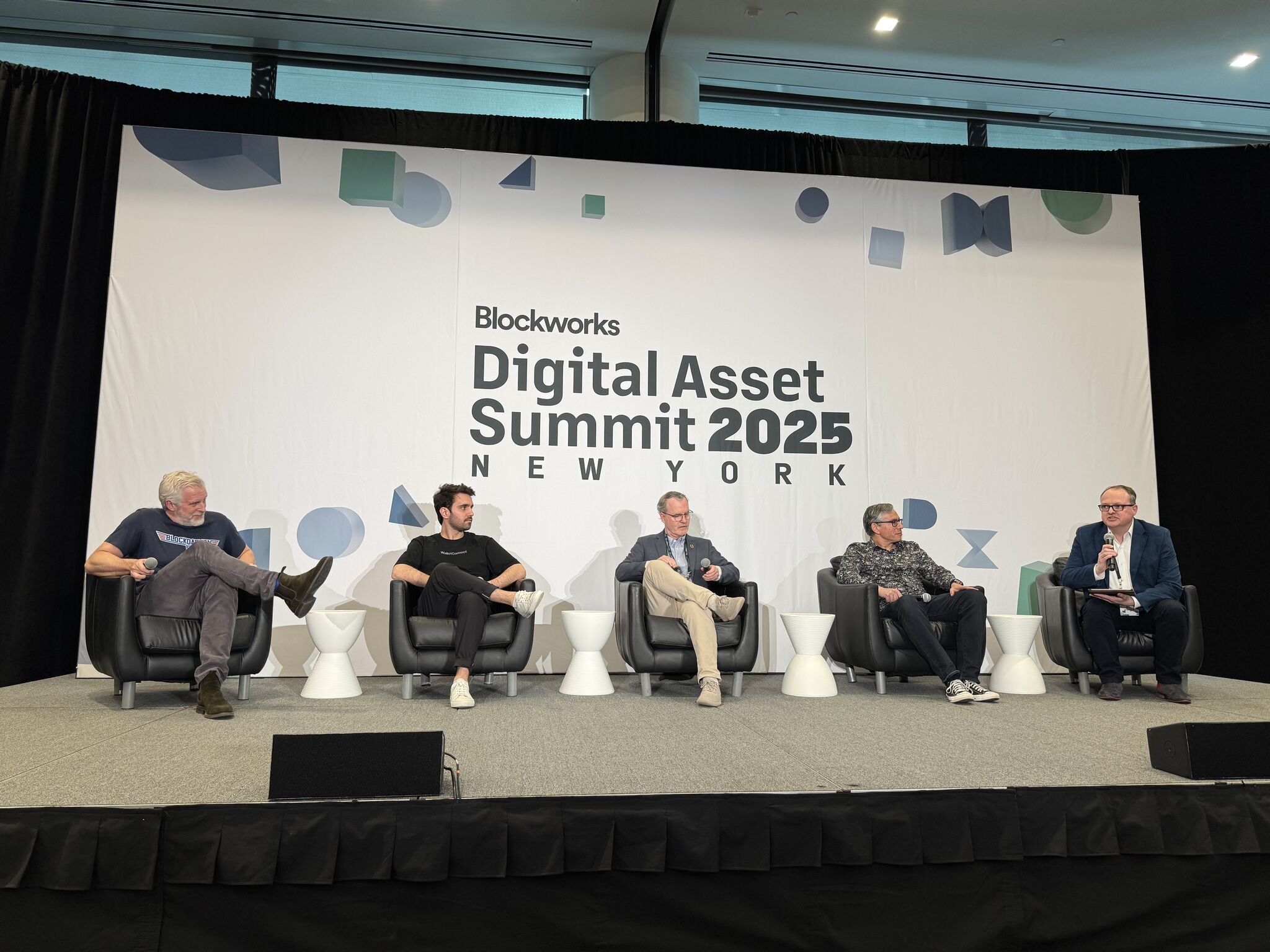Paul Brody and Yorke Rhodes III, respectively Chairman and Director at the EEA were on stage for Digital Asset Summit 2025
“We did a survey at EY, switching from traditional payment rails to stablecoins could save $100M/Year”
Paul
“We have to build for enterprises and cater to them, this is the next step”
Pedro
Enterprise Demand for Digital Assets: Why Ethereum is Leading the Way
April 2, 2025
The recent panel at DAS featuring industry leaders from EY, Microsoft, WalletConnect, and Blockdaemon revealed critical insights about enterprise adoption of digital assets. As regulatory clarity improves in 2025, here’s why Ethereum is positioning as the dominant enterprise blockchain solution.
Key Drivers for Enterprise Adoption
Cost Reduction
“You can cut operational administrative costs for transactions by something on the order of 90% if you can do on-chain transactions on crypto rails at scale.” – Paul Brody (EY)
Process Efficiency
“We know that we can reduce the cycle time to administer contracts literally by 99%… We did an EY and Microsoft work together. We automated the Xbox video game procurement network. Cut cycle time from 45 days to four minutes.” – Paul Brody (EY)
Financial Benefits
“At EY, we estimated if we could move all of our payments on-chain to stablecoins, we could save ourselves about $100 million a year.” – Paul Brody (EY)
Critical Challenges Being Addressed
- Privacy Solutions “On public chains there is no privacy yet… the ability to have privacy at scale on public chains, which is something we’re really just getting to now, is extremely important for any large scale implementation.” – Paul Brody (EY)
- Layer 2 Evolution “The L2 landscape really allows for applications to be built that combine a lot of the things we’ve mentioned around privacy but based on a public sort of infrastructure network.” – Konstantin Richter (Blockdaemon)
- Maturing Ecosystem “There’s been a big shift for developers in the ecosystem… enterprise used to be almost like a dirty word for these developers, and now it actually has become very attractive and it shifted their priorities.” – Pedro Gomez (WalletConnect)
Practical Enterprise Use Cases
- Inventory Traceability “If you tokenize the inventory, you can apply all the rigor of a bank to a single penny to every single piece of your inventory, and the result is lower inventory.” – Paul Brody (EY)
- Supply Chain Finance “If you have a high capital value in physical assets and you can do things to make settlement more efficient… you can actually get a very large financial benefit.” – Jörg Rhodes (Microsoft)
- Stablecoin Payments “The white paper for Bitcoin was about payments and I think that is the most attractive use case… we have already seen WalletConnect has worked with Shopify and Stripe to build great checkout experiences.” – Pedro Gomez (WalletConnect)
Why Ethereum Will Dominate
“Regulation is moving us away from multi-channel, multi-platform, multi-blockchain systems… regulatory pressure plus standards pressure is driving towards a much smaller number of ecosystems. And I think we will see a pattern in crypto that looks very much like the patterns that we see in other technology industries. We’re gonna have a dominant platform, it’s Ethereum.” – Paul Brody (EY)
Looking Forward
With regulatory clarity improving in 2025, enterprises are positioned to accelerate blockchain adoption, particularly on Ethereum. As privacy solutions mature and Layer 2 networks evolve, we’ll see more large-scale implementations that transform how businesses operate, especially in inventory management, payments, and supply chain optimization.
The Enterprise Ethereum Alliance continues to lead the way in establishing standards and best practices for enterprise blockchain adoption, helping organizations navigate the evolving digital asset landscape.

